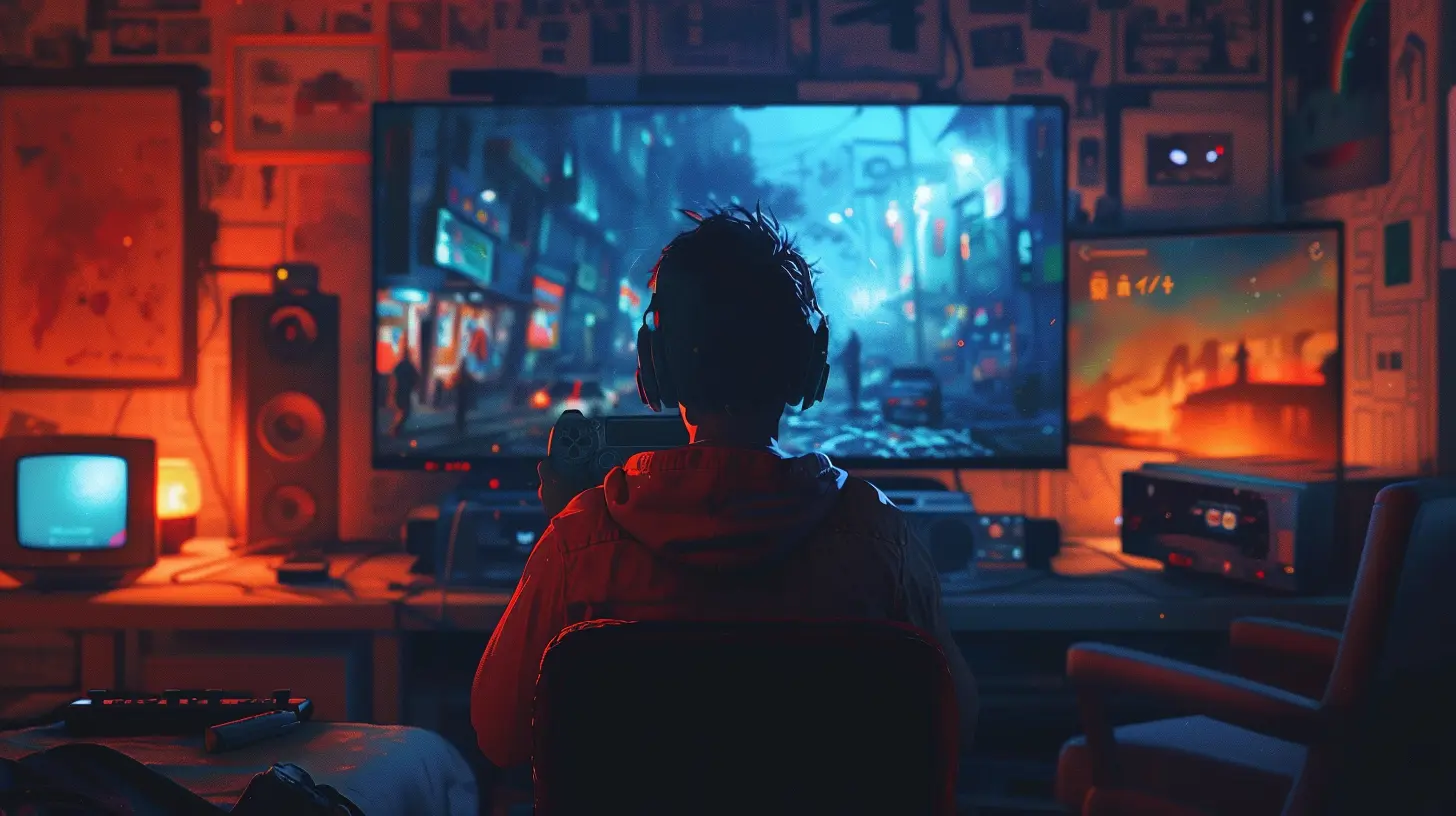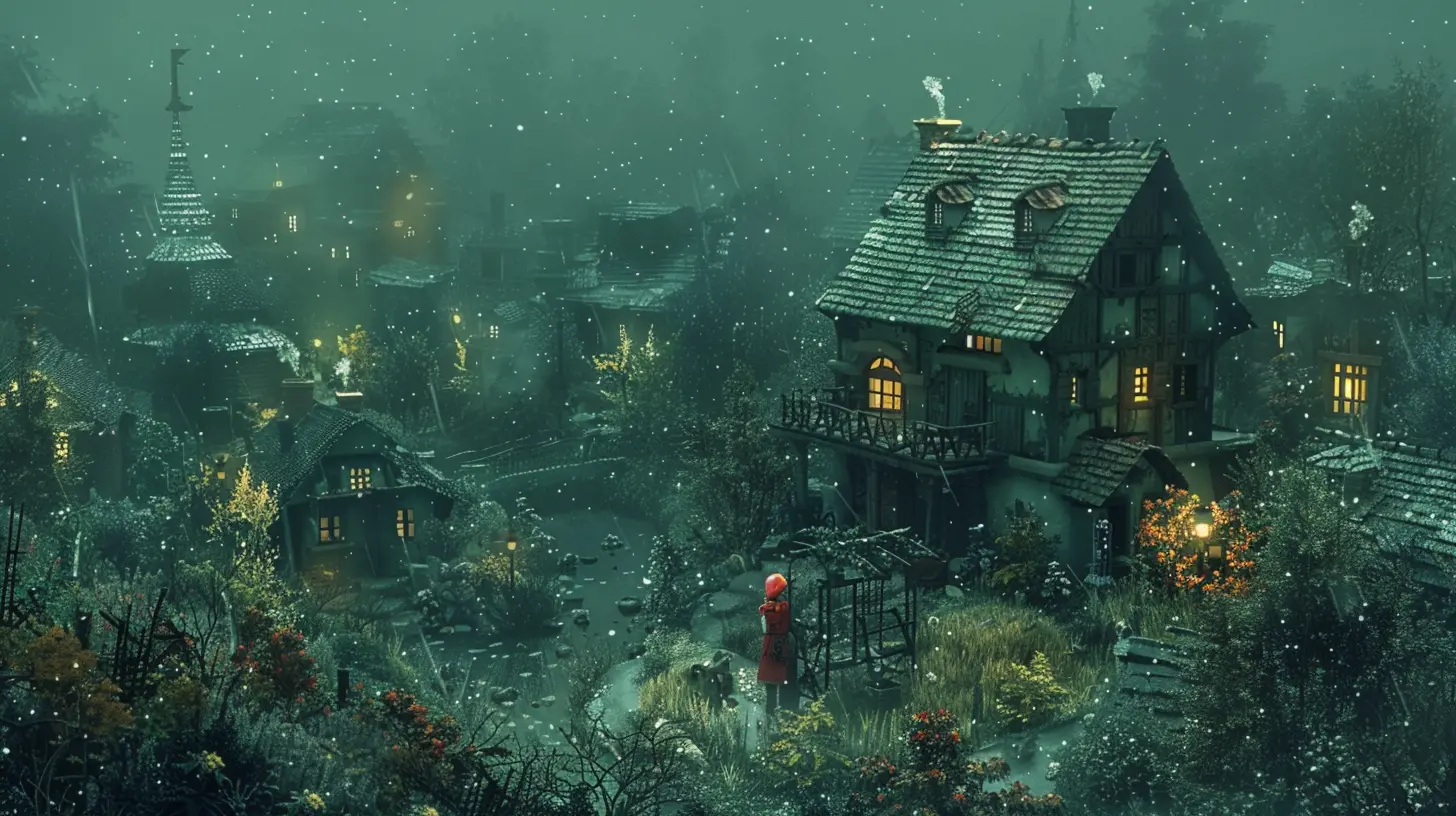The Role of Emotion-Driven Gameplay in Indie Games
23 July 2025
When was the last time a game made you cry? Or smile so hard your cheeks hurt? Maybe even left you staring at the screen long after the credits rolled, processing what just happened? If you've played an indie game recently, there's a good chance you're nodding along right now. That's because indie games are absolutely nailing something that some big-budget AAA titles often skim over—their ability to evoke raw, authentic emotions through gameplay.
Let’s dive headfirst into why emotion-driven gameplay has become such a game-changer (pun intended!) for indie developers and has helped their creations stand out in a crowded gaming industry.
Why Emotions Matter in Gaming
Before we get into the nitty-gritty, let’s tackle the big question: why do emotions even matter in gaming? I mean, we play games to have fun, right? Well, not always. Games are no longer just about mindlessly jumping over pits or shooting endless waves of bad guys. They’re about experiences. And experiences are inherently emotional.Think about your favorite game. Chances are, it’s the one that hit you right in the feels—whether it made you laugh hysterically, feel a pang of guilt for your in-game choices, or left you bawling because of a plot twist you did not see coming.
Indie developers have caught onto this and are flipping the script. Instead of bombarding us with flashy graphics and massive worlds, they dig deep into storytelling, relatable characters, and gameplay mechanics that strike a chord with us emotionally. It’s like they’ve cracked the code to our hearts.
Indie Games: The Perfect Vehicle for Emotional Storytelling
So, why are indie games so uniquely suited for emotion-driven gameplay? Let’s spell it out.1. Creative Freedom
Indie developers don’t have to answer to massive corporations or please shareholders. They can make exactly the kind of game they want. This freedom leads to some truly experimental and heartfelt games that just wouldn’t fly under the pressure of AAA financial expectations. It’s like the difference between a small, heartfelt indie movie and a Hollywood blockbuster. One goes for your heartstrings; the other tries to blind you with explosions.Games like Celeste and Hollow Knight were made by teams with a clear creative vision—and you can feel that in every jump, every interaction, and every moment of their storytelling.
2. Personal Stories
Many indie games are born out of personal experiences or emotions that the developers themselves have been through. When creators pour their own struggles, joys, and heartbreaks into their games, we can’t help but connect. It feels real. For example, Celeste tackles themes of anxiety and self-doubt, which are deeply relatable for so many people. Playing it feels like someone is saying, “Hey, I’ve been there too.”3. Minimalism Forces Meaning
Because indie games often operate on tighter budgets, they can’t rely on fancy graphics or sprawling open worlds to dazzle players. Instead, they focus on making every moment count. This minimalist approach creates space for emotional storytelling. Less is more, you know? It’s like comparing a heartfelt acoustic song to a loud, overproduced pop track. The rawness stands out.
The Mechanics of Emotion-Driven Gameplay
Okay, we’ve established why emotional storytelling thrives in indie games. But how does it actually happen? How do these games get us all misty-eyed or grinning like fools? It’s not magic (though it feels like it sometimes). It’s all about the mechanics.1. Relatable Characters
Memorable characters are at the core of any emotional game. Whether it’s the quiet sadness of Mae in Night in the Woods or the determined spirit of Madeline in Celeste, these characters aren’t superheroes or one-dimensional tropes. They’re flawed, vulnerable, and human. Just like us.2. Meaningful Choices
Indie games often give players choices that genuinely matter, and these decisions can make us feel a lot. A prime example of this is Undertale, where your choices shape not just the story, but how the characters see you. Remember sparing that enemy instead of killing them? Or, you know, deciding not to spare them? Yeah, those moments stick with you.3. Music That Hits Hard
Ever notice how a game’s soundtrack has the power to make or break a moment? Indie titles use music as a secret weapon to amplify emotions. Think about To the Moon. The piano-driven soundtrack wraps itself around your heart and doesn’t let go until you’ve got tears running down your face. The right music at the right moment can make emotions hit like a truck.4. Unique Gameplay Mechanics
Some indie games go beyond storytelling and bake emotions right into the gameplay itself. Take Journey, for instance. The way you connect with strangers (without words) as you explore the vast desert feels oddly intimate. Or Gris, where the gameplay shifts to reflect the stages of grief—brilliantly tying the mechanics to the emotions.
Why Players Are Craving Emotional Games
In a world where we’re bombarded with content 24/7, players are hungry for experiences that feel genuine. We’re tired of the same rinse-and-repeat formulas and hollow explosions. We want stories that resonate, characters that feel alive, and gameplay that challenges more than just our reflexes—it challenges our hearts and minds.And indie developers? They’re not just meeting this demand; they’re leading it. Emotional games have become a breath of fresh air in an industry dominated by overproduced blockbusters. They remind us that gaming is an art form, capable of moving us in ways no other medium can.
The Future of Emotion-Driven Gameplay in Indie Games
So, what’s next for emotion-driven indie games? Honestly, the sky’s the limit. As technology advances, developers will have even more tools at their disposal to tell powerful stories. Imagine richer AI that adapts to how we’re feeling, or VR experiences that make emotions even more immersive. The possibilities are endless.But at the heart of it all, it’s not about the tech—it’s about the stories. And indie developers will continue to tell those stories in ways that resonate with us deeply. Because at the end of the day, we’re all human, right? And we all want to feel something.
Wrapping It Up
Emotion-driven gameplay isn’t just a trend; it’s a revolution. And indie games are leading the charge. They’ve shown that you don’t need billion-dollar budgets or photorealistic graphics to leave a lasting impact. All you need is heart—and a willingness to create something that connects on a deeply human level.So, the next time you pick up an indie game, pay attention to how it makes you feel. Whether it’s heartbreak, joy, or even just a quiet sense of hope—those emotions are what make games truly unforgettable. And isn’t that what it’s all about?
all images in this post were generated using AI tools
Category:
Indie GamesAuthor:

Tina Fisher
Discussion
rate this article
1 comments
Seraphine McKinnon
In the shadows of pixels and sound, indie games weave emotional tapestries that captivate hearts and minds. What hidden narratives lie beneath the surface? As players navigate joy and sorrow, can these experiences unlock deeper connections to our own realities? The true magic of gaming unfolds in the unseen.
July 31, 2025 at 5:02 AM

Tina Fisher
Absolutely! Indie games often explore profound narratives and evoke deep emotions, allowing players to forge meaningful connections with both the game and their own experiences. This emotional depth is what truly sets them apart.


